
Chen Yunlin (left), former president of the Association for Relations Across the Taiwan Straits; Chen Lihua (center), founder of the Red Sandalwood Museum of China in Beijing; and Zheng Xinmiao (right), former director of the Palace Museum, look at a model of Yongdingmen Gate made of sandalwood at the National Museum of China in October 2013.[Photos provided to China Daily]
An advocate of culture works to bring back Beijing’s ancient landmarks, Deng Zhangyu reports.
The walls and gates encircling Beijing were mostly demolished in the 1960s, closing a door on an important part of the imperial city’s history.
Beijing had nine inner city gates and seven outer city gates. Today, only two of the original inner city gates, Zhengyangmen and Deshengmen, remain. Yongdingmen was the only outer gate that was rebuilt in 2004.
However, a current project to re-create the walls and gates is restoring those ancient memories brick by brick, using precious red sandalwood and ebony.
The reconstruction project, initiated by Chen Lihua, a self-made billionaire based in Beijing, and her Red Sandalwood Museum of China, is half finished with nine gates completed. The massive project, which started 10 years ago, is expected to be completed in the next two years with 16 gates re-created.
On display at the MGM Art Space, Macao, through March 22, Red Sandalwood Art Exhibition of Old Beijing City Gates features sandalwood miniatures of Yongdingmen, which translates as the Gate of Eternal Stability, and the Temple of Heaven.
“I have a dream to restore old Beijing’s memory. The miniature city gates and walls are a cultural legacy for future generations,” says Chen, who is also an active advocate of culture.
Chen, 73, set up the first private red sandalwood museum in China in 1999. Since then she has devoted herself to the project of replicating the lost city walls and gates. Growing up in Beijing and having seen the city walls and gates in her childhood, Chen says she has a special feeling for the project.
All the gates and walls are being built one-tenth the size of the original structures. Andingmen, one of nine gates in ancient Beijing’s inner city, is about 3.5 meters tall and weighs about 6.5 tons. The gate tower and watchtower are made of sandalwood while the city walls are being built from ebony, the color of which is similar to bricks of the old walls.
Chen has a factory in a Beijing suburb, equipped with a team of more than 200 red sandalwood sculptors and experts. She says she’d love to spend all her time and money on her dream of restoring Beijing’s imperial landmarks.
All the models are structured using mortise-and-tenon joints, without a single nail, in what was an essential technique for traditional Chinese buildings. It’s also a simple but strong method to join pieces of wood.
“It’s a combination of history, architecture, art and culture-a great project,” says Shan Jixiang, director of the Palace Museum.
Shan says Chen’s red sandalwood museum has a large collection of the precious wood and employs craftsmen and women skilled at sculpting wood. The Palace Museum cooperates with Chen in repairing ancient furniture made from precious wood.
Shan says China is one of the first countries to recognize the value of red sandalwood, which has been grown for several hundred years in India. It was popular with royal families since the Tang Dynasty (618-907).
“Chen combines the skill of red sandalwood sculpting with traditional Chinese architecture. It offers us a new way to experience old Beijing’s culture,” adds Shan.
Since the Ming Dynasty (1368-1644), China’s emperors continued building the colossal fortification system for the capital city. A single gate and the attached walls took about 200,000 men up to four years to build. Ancient Beijing had 16 such gates in its inner and outer city areas.
Li Jianping, chairman of the Beijing History Association, says the Forbidden City is Beijing’s gold and red crown while the grey gates and walls were the “city’s skirt”. The city’s cultural symbol was halved with the demolition of its gates and walls in the 1960s, he says.
“Beijing’s gates and walls were more than a protection system. They stood for the hierarchy of the emperors and the country they ruled,” Li says.
As a capital city, Beijing’s gates and walls were bigger than those in other cities such as Pingyao, Shanxi province, and Nanjing, Jiangsu province. The gates of the inner city where the emperors resided were also higher than those in the outer city. Each gate had a clear function. For instance, at the Zhengyangmen gate, people gathered to pay their taxes. Andingmen was where troops would return after winning wars and Chaoyangmen was the gate through which grain was transported.
“The gate names remain as street names. I’m sure most young people are familiar with the street names but not so many of them know the history behind them as they haven’t even had a chance to see the gates, “ says Li.
That’s why Chen is passionate about rebuilding the gates. She says she wants to offer a chance to future generations to learn the history and culture of Beijing in a visual and concrete manner.
Chen retains her habit of going to her factory almost every day, and is supported by her family both emotionally and financially.
Asked about her future plans, Chen says she plans to replicate the Old Summer Palace, memorial archways and courtyards after her gates and walls project is completed. She also wants to build a park with all her reproductions of old Beijing architecture open to the public.
“The Chinese dream is popular. My Chinese dream is to restore old Beijing’s culture. I’m still in my dream and waiting for the time I wake up,” Chen says, with a laugh.
Contact the writer at dengzhangyu@chinadaily.com.cn
MODELS OF GATES
・CHAOYANGMEN
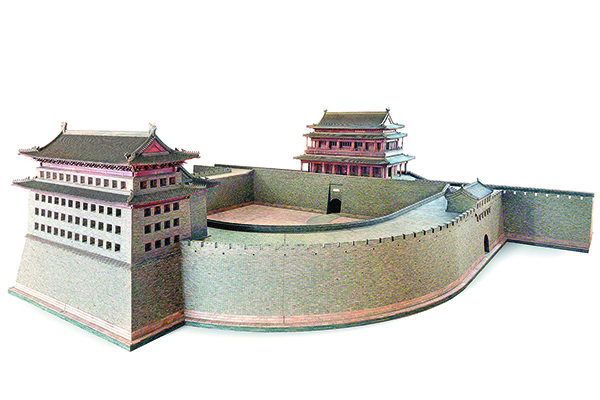
This inner city gate, which translates as the Gate of the Morning Sun, was used to transport grain. Using a moat in front of the gate, Beijing’s grain was shipped from Chaoyangmen to local residents. Lots of rice storage buildings were located near the gate. Because of its importance in grain distribution, Chaoyangmen was also known as the city’s “life gate”.
・DESHENGMEN

The Gate of Victory. This was one of nine gates in Beijing’s inner city, through which armies sent into battle by China’s emperors would walk to begin their expeditions. Emperors of the Qing Dynasty (1644-1911) launched three major wars from here. If rivals wanted to invade Beijing, they would first have to forcefully take control of Deshengmen.
・DONGZHIMEN
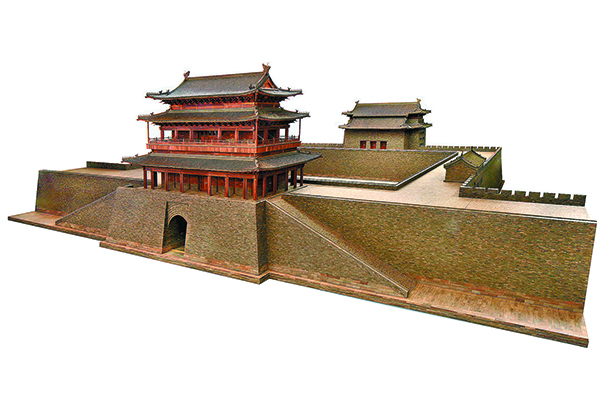
This inner city gate was known as the Gate of Wood. All the wood needed for the construction of palaces for royal families was transported through this gate, which was surrounded by woodwork factories and coffin stores.
・XIZHIMEN
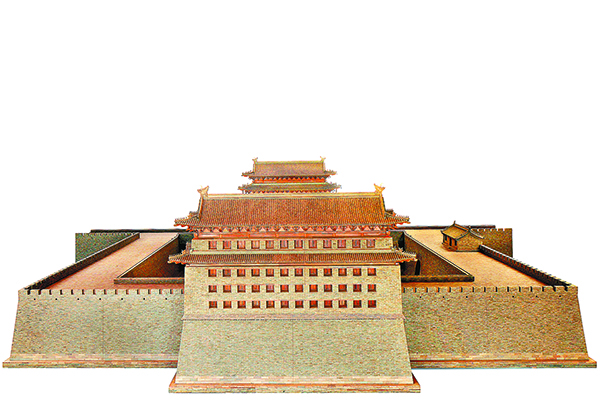
This inner city gate functioned as the Gate of Water. Mineral water for emperors was fetched from a spring outside Beijing and sent to the palaces through this gate before sunrise.
・ANDINGMEN
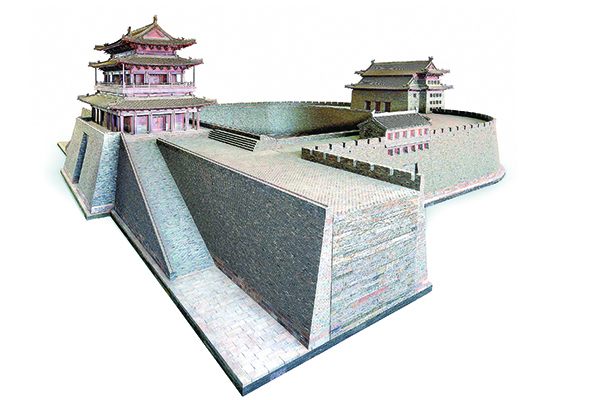
An inner city gate literally meaning the Gate of Peace. When generals and troops returned victorious from war, they would walk through the gate to report their triumph to emperors living in the Forbidden City.
・YONGDINGMEN
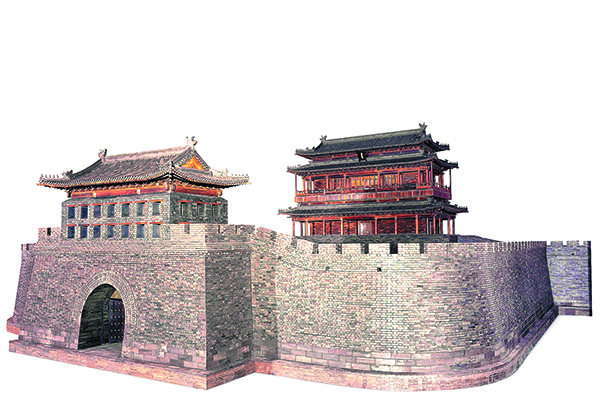
The name translates as the Gate of Eternal Stability. This was the most important of the seven gates in ancient Beijing’s outer city. Its name signifies that the nation will remain stable and safe forever. Seeing the gate tells travelers they have arrived at Beijing.
